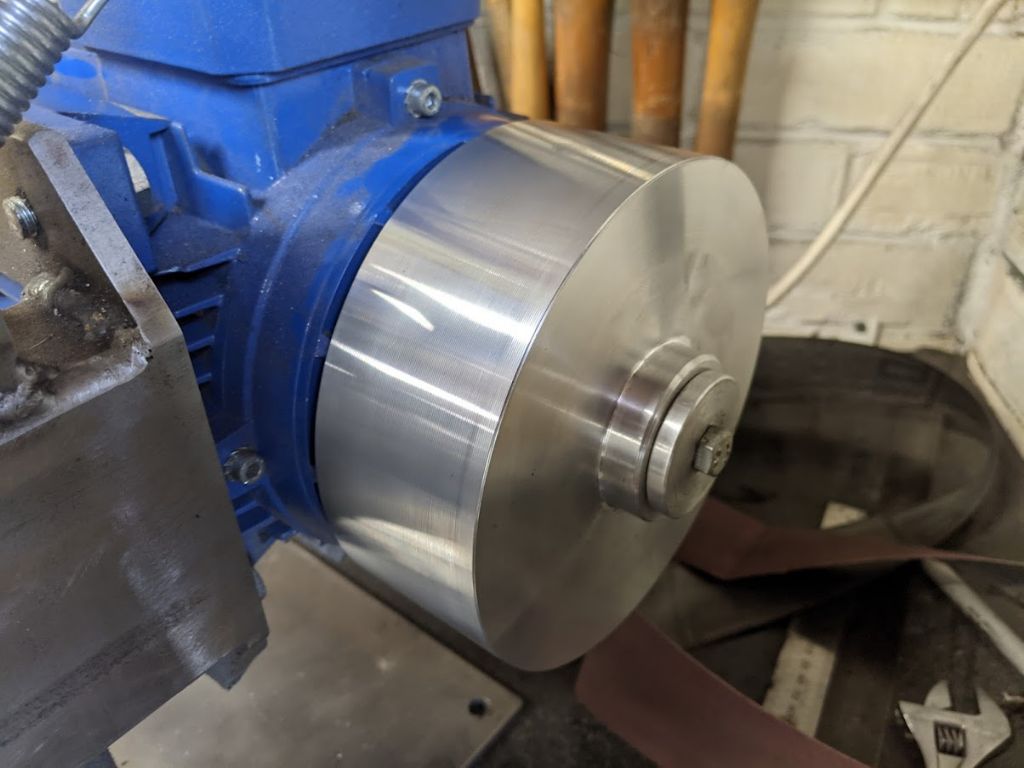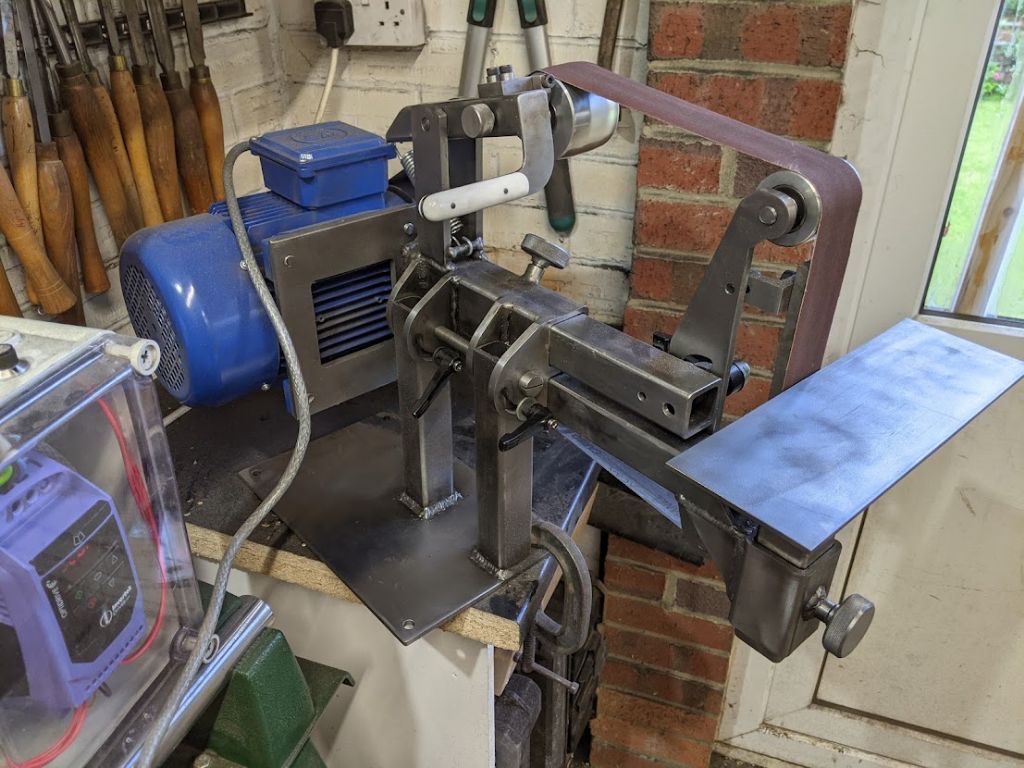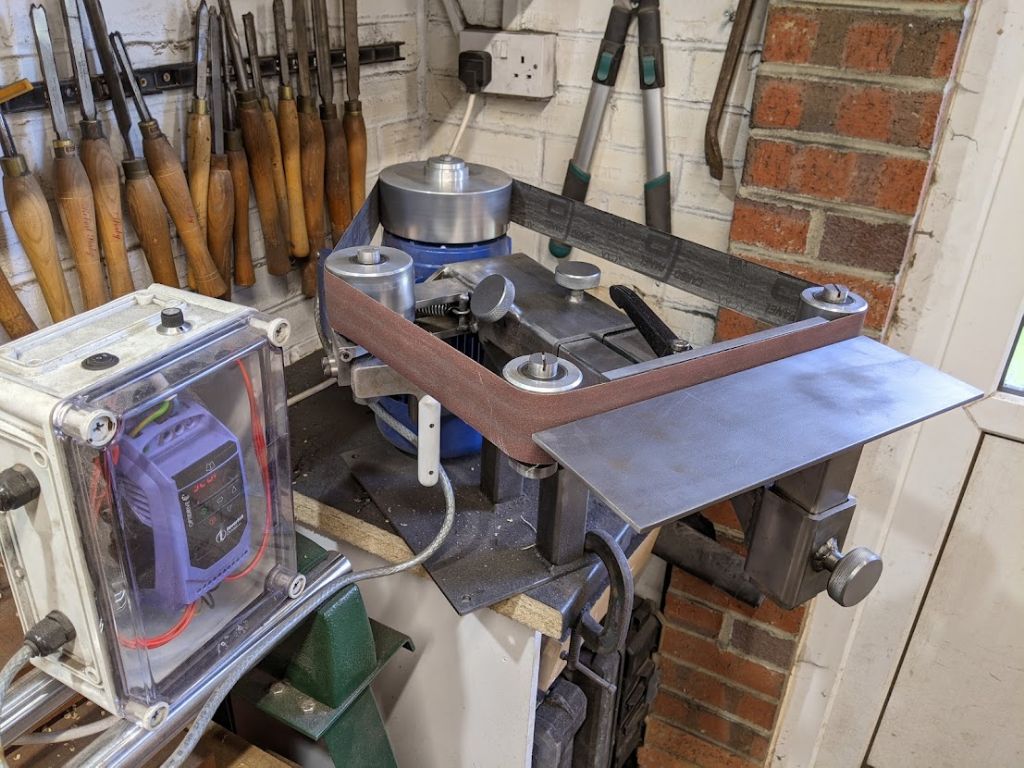Hello all, I could do with some help
I have a wheel from a belt sander I've been rebuilding, however, the wheels bore is too large and not concentric with the outside surface so I get about 10 thou runout at best after I've shimmed it. Not great when it's spinning very fast.
Video of runout
I'd like to bore the center out, then plug it and rebore it properly so everything is concentric.
I have a slug of around 40mm aluminium just the right size to do so, but before I jump in and start making chips I just want to ask about the fit. The motor shaft is 24mm so the hole will be reamed to that at the end.
I've looked in the zeus book about what to do, but having never done it before I could do with a second, third or more opinions.
If I want the plug to press in and never come out again, what sort of dimensions should I aim for?
Would it be better to drill out the majority of the center of the plug as well?
Will the center being removed after effect the fit?
Thanks



Link to album of building the belt sander
Howard Lewis.







